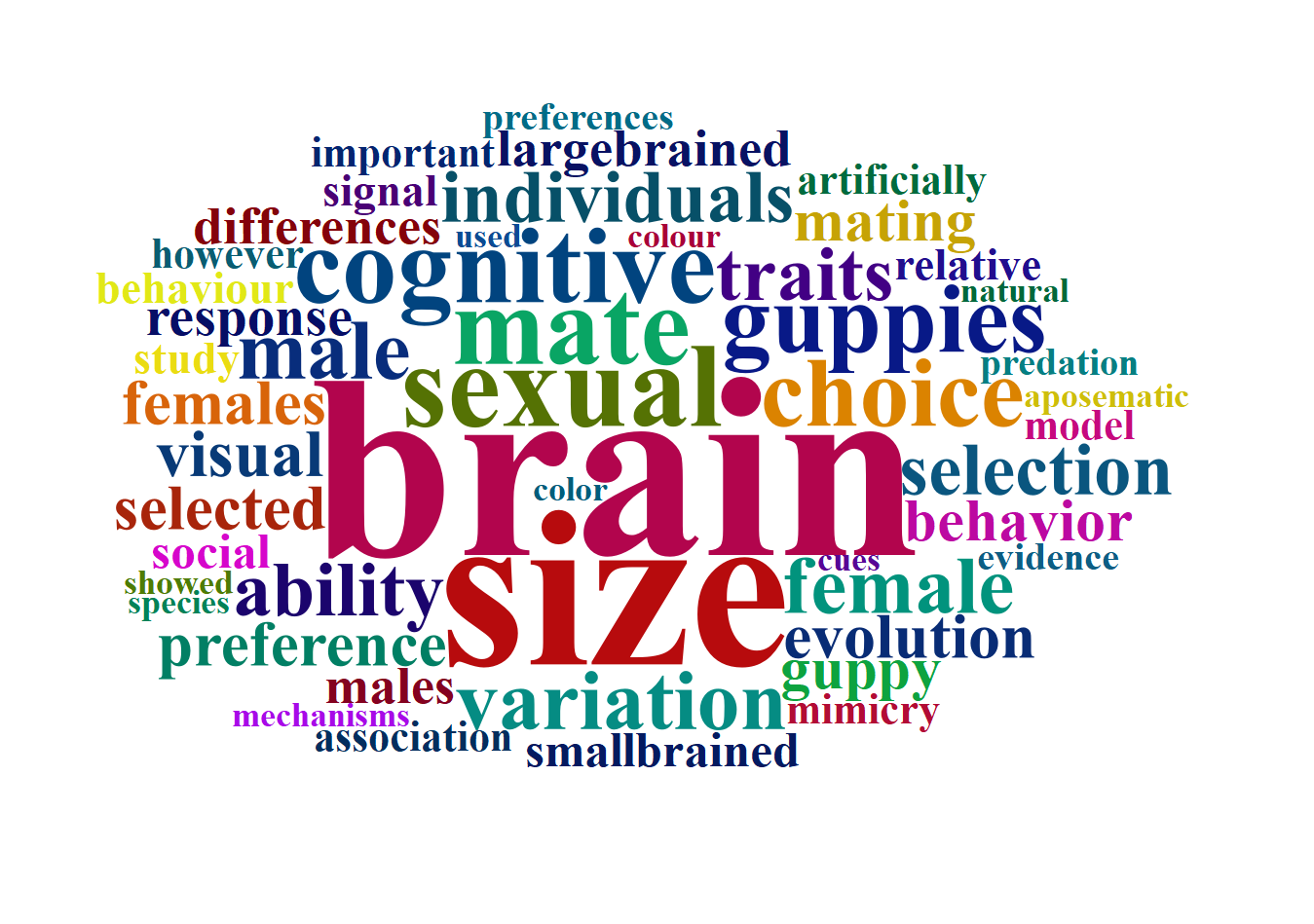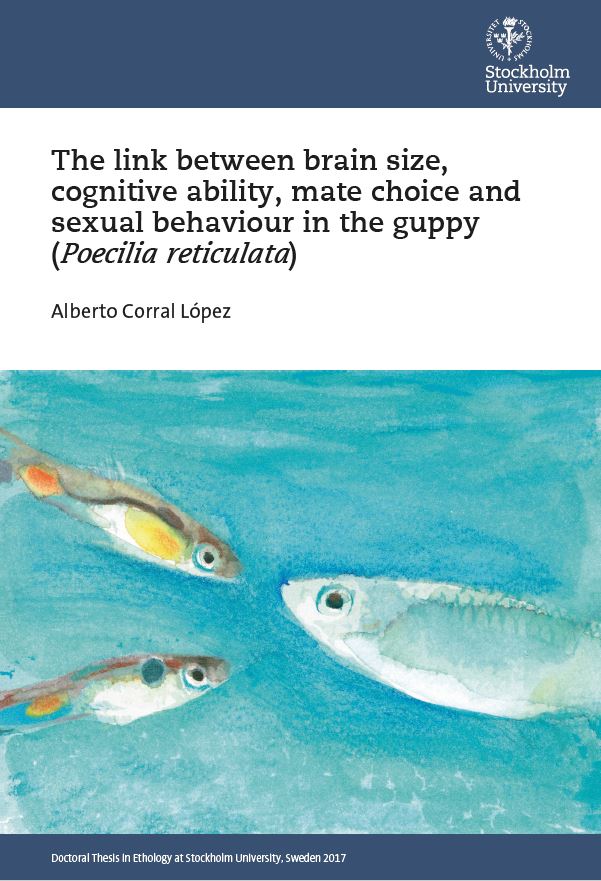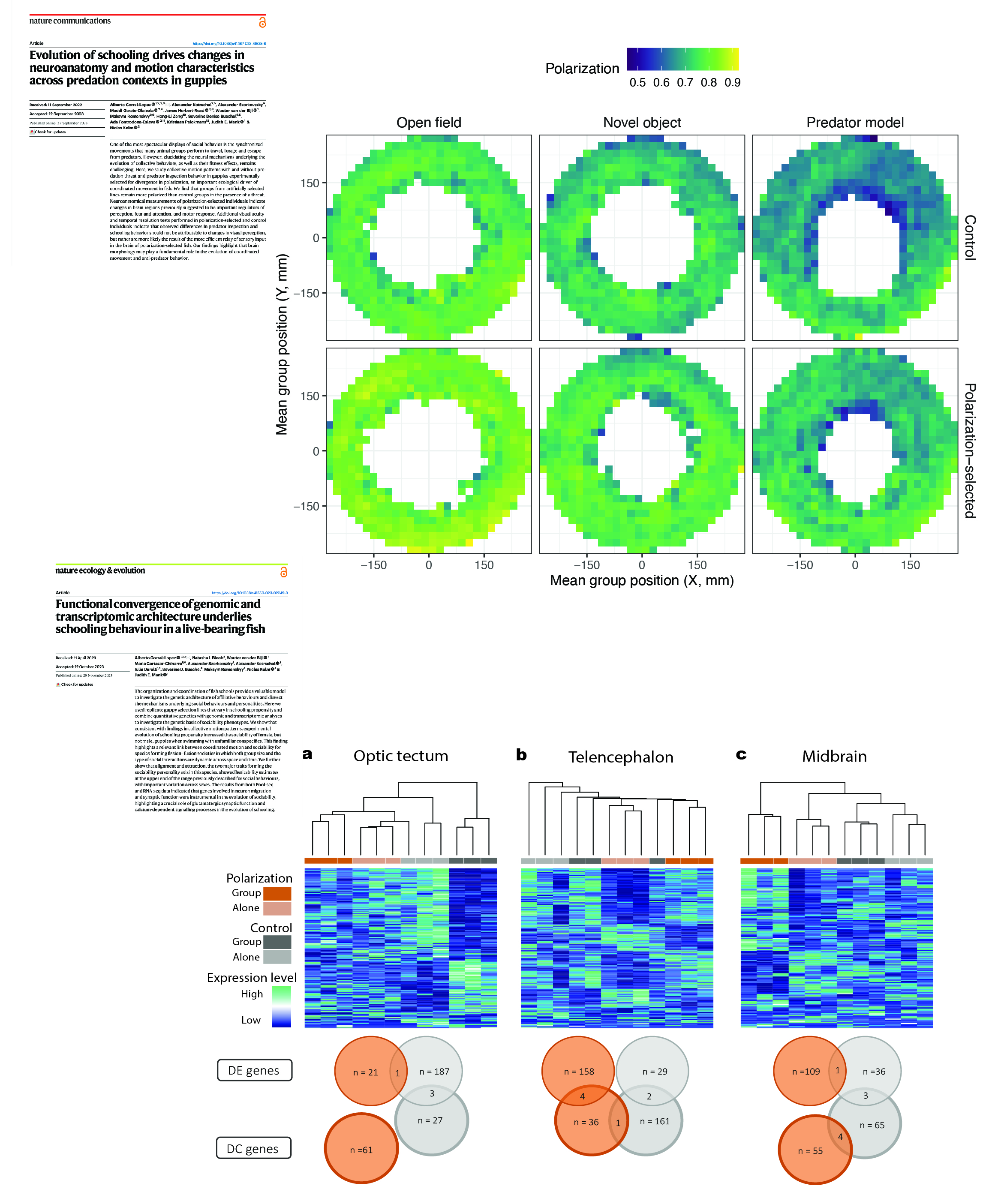COLLECTIVE BEHAVIOR AND THE BRAIN
Understanding why and how animals gather in groups and coordinate their movements has always aroused great scientific interest. Indeed, we have to date accumulated strong evidence of selective forces acting on collective behaviors (e.g. predation pressure, foraging and travelling efficiency). However, understanding the mechanisms underlying the evolution of collective behavior has remained technically challenging. In my research, I assessed guppies artificially selected for higher coordinated motion with high-resolution computer vision tools, microcomputed tomography of brain anatomy, and multiple -omics tools to further our understanding of the mechanisms underlying the evolution of collective behavior.
Research highlights:
We found robust correlated changes in anti-predator response and sociability of guppy individuals selectively bred for higher coordinated motion, with changes in key brain regions and in the efficiency of social information transferring.
These results provide novel evidence for brain anatomy as an important mechanism contributing to variation in collective behavior.
The development of tools for high-throughput behavioral phenotyping of individual fish when swimming in a school provided us a comprehensive dataset to evaluate the heritability of key behaviors in the evolution of collective motion. Furthermore, our results from DNA resequencing and transcriptomics comparing high- and low-sociability fish convergently implicated genes involved in social decision making through neuron migration and synaptic function. These results provide novel evidence of the crucial role that glutamatergic synaptic function and calcium-dependent signaling processes in the brain play in the evolution of collective behaviors.




